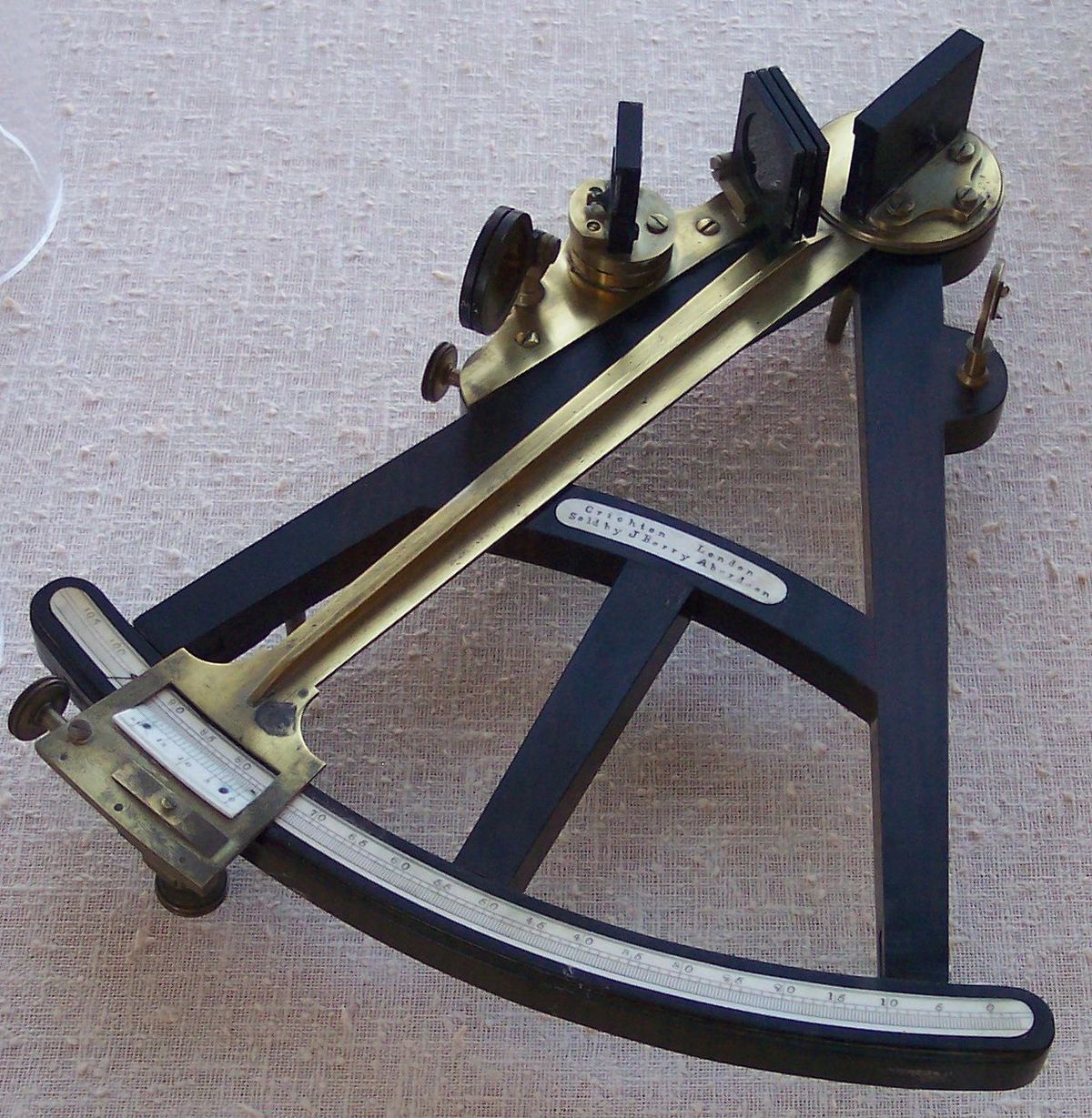Octant

The Octant
The Octant In this activity you will build a model of a 17th century Hadley Octant.
Description
The octant was used for navigation to get a precise measure of the angle of altitude of a heavenly body such as the sun or a star with respect to the horizon. It consists of frame with a sighting tube and second reflector. A moveable arm with a primary mirror is attached to the top of the frame at pivot point. When the navigator holds the octant level towards the horizon he can sight the horizon through the sighting tube. Next to the horizon is a half mirror that reflects light from the primary mirror. The user rotates the arm causing the primary mirror to change the position of the reflection of the object until it lines up in the secondary mirror opposite the direct line to the horizon. The altitude angle can be read from the rulings at where the arm overlaps the frame. The octant makes it possible to make an accurate measurement on a rocking ship because the instrument can be adjusted in small increments as the reflections momentarily pass through the point of precise alignment. The original octant was made from wood, brass and polished glass mirrors.
Background
The simplest navigation measurement is finding your latitude - that is your position north or south of the equator. The North Star appears to stay put in the sky while all the other stars, sun and planets appear to rotate around the North Star. The angle of the north star over the horizon is the latitude. At the equator the North Star appears on the horizon at 0 degree, at the north pole it appears 90 degrees directly overhead. You can also use the angle of the Sun below vertical at noon after you adjust for the seasonal shift and the tilt of the Earth. At noon on the equinox the sun is located at a position equivalent to your latitude below the zenith. So at the equator at noon on the equinox the sun is 90 degrees overhead, 90 -90 equal 0 deg latitude. At noon at the North Pole on equinox the sun is 0 degrees above the horizon so 90-0= 90 degrees latitude. At other times of the year you must adjust for the tilt of the Earth 23.45 degrees. At winter solstice you must subtract 23.45 degrees from your answer. In summer you must add 23.45 degrees. Between the solstice and equinox you add or subtract a fraction. The values for each day of the year can be looked up on a declination table.
Materials and Tools
Color Printer
Card stock
Exacto Knife
Thumbtack
Pencil eraser
1"x1" mirror
1"x ½" mirror
Construction
1) Print all the pages on a color printer on card stock, or glue the print out on card stock or file folder stock.
2) Cut-out all the pieces and remove the internal white areas. 3) Fold the back support and the arm support into rigid bars with a "T "cross section.
4) Cut out the two gray pivot discs and cut an X in the center. Fold the triangular tabs up. Slide these into the hole at the pivot point on the main frame. The two sets of tabs attach the gray to discs to each other and pivot freely in the round hole in the back.
5) Cut and fold the two mirror supports and the sighting tube. Glue the gray panels to lock the shapes.
6) Glue the supporting bars to the back of the frame and the arm support to the front of the arm.
7) Glue a 1" x 1" mirror scrap to the primary mirror and a 1" x ½" mirror scrap to the secondary mirror supports.
8) Glue the arm to the of the top gray pivot disc on the back.
Resources
https://www.pveducation.org/pvcdrom/properties-of-sunlight/declination-a... Frame Support

